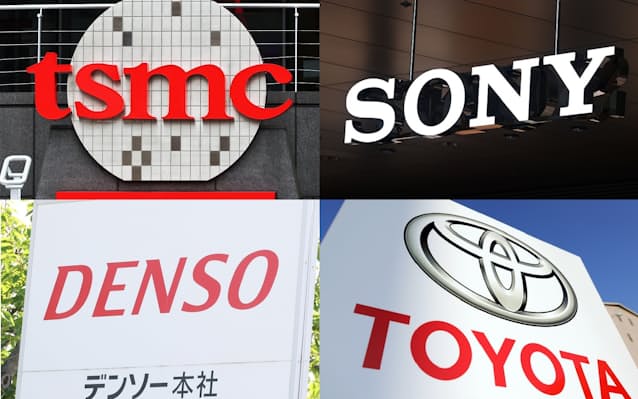
TSMC: To establish second factory in Kumamoto with Sony Toyota
・Construction will begin at the end of 2024 and be completed at the end of 2027.
・6-nano process production line at the second factory
We bring you a summary of articles published in the Japanese version of JoongAng Ilbo.

World’s largest foundry: Taiwan TSMC
1. TSMC will build a second semiconductor factory in Japan.
2. This month, we will open our first Kumamoto factory.
A production process for cutting-edge semiconductors will be added to the second factory.
TSMC’s production base in Japan:
TSMC will gain the ‘diversification effect of bases’ overseas.
Japan will regain its glory as a ‘lost semiconductor manufacturing nation’.
![]()
TSMC investment scale:
TSMC held a board meeting on February 6th.
An additional $5.262 billion (780 billion yen) will be invested in JASM to build a second factory in Kumamoto.
JASM shareholder composition:
TSMC established JASM with a Japanese company to construct a factory in Japan.
Sony has a 6% stake and Denso has a 5.5% stake.
This time, Toyota has joined the company with a 2% investment.

Second factory schedule:
Construction will begin at the end of 2024 and be completed at the end of 2027.
TSMC responds to ‘increasing customer demand’.
The increased production scale will improve JASM’s cost structure and supply chain efficiency.
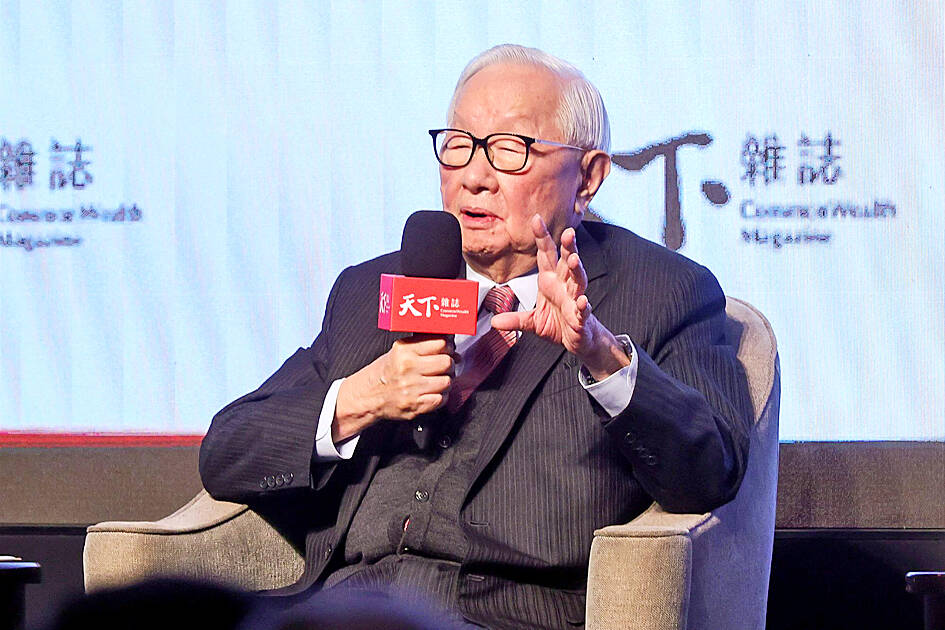
Kumamoto Factory 1 Schedule
An opening ceremony is scheduled for February 24th.
This is TSMC’s first factory to produce semiconductors outside of Taiwan.
First factory production line:
Targets 12, 16, 22, and 28nm process platforms.
The company will produce 55,000 12-inch wafers per month.
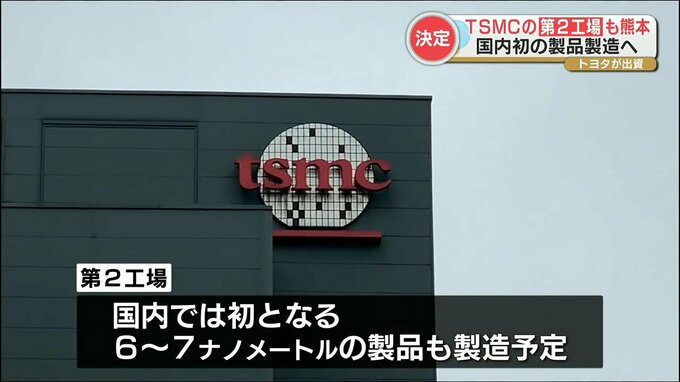
Second factory production line:
The second factory will include a 6-nano process production line.
The second factory in Kumamoto will be completed at the end of 2027.
More than 100,000 12-inch wafers are produced every month.
It is expected that 3,400 new jobs will be created.
Plans for the third factory:
It is highly likely that TSMC will build a third factory for 3nm in Japan.
The Japanese government will support ”up to 50% of the factory construction costs” in order to attract the company.
Incentive content:
Does not distinguish between nationalities. We provide support without distinction, from legacy to cutting-edge semiconductors.
With strong support from the Japanese government, total investment in JASM has exceeded $20 billion.
Japanese version of inflation control law:
1.The government will give tax breaks to semiconductors made in Japanese factories.
2.Japanese version of the Inflation Control Law is scheduled to be implemented.
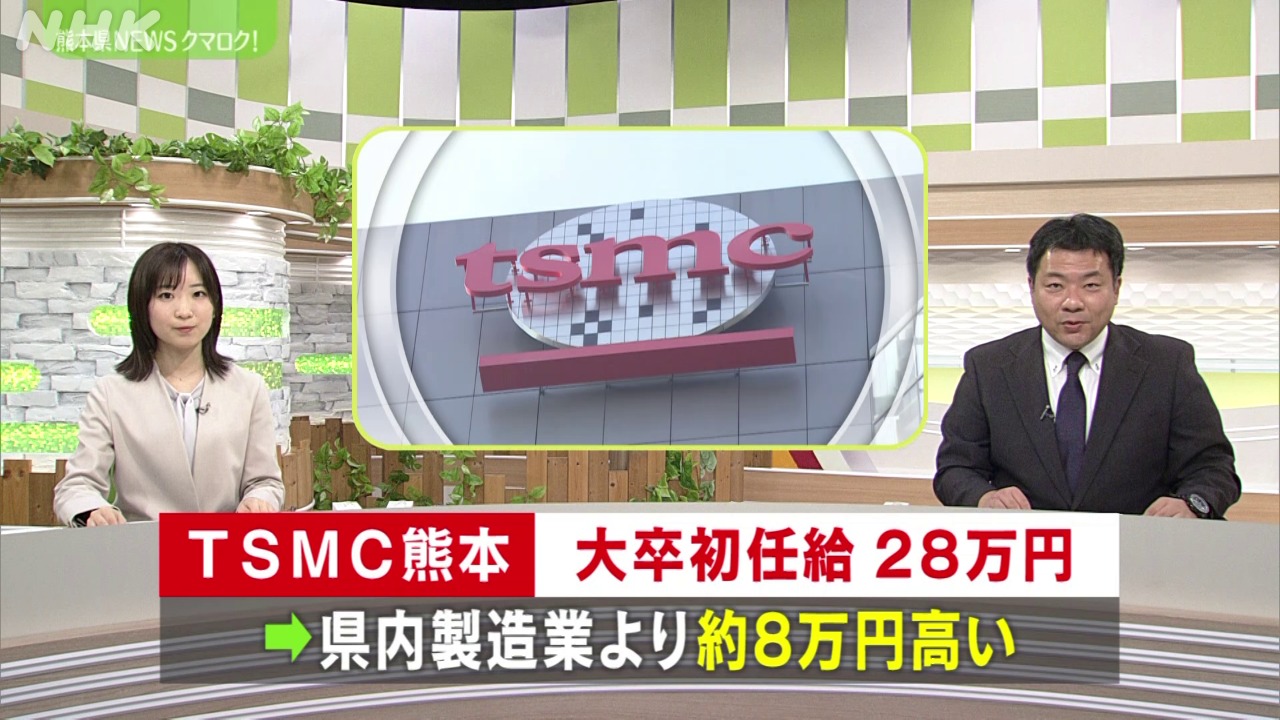
Japan’s low labor costs:
According to the Nihon Keizai Shimbun, the starting salary for university graduates at Sony is 222,000 yen.
Number of people employed at JASM:
We hired 125 new employees last year. A monthly salary of 280,000 yen was paid to university graduate employees.
This exceeds the starting salary of 210,000 yen for university graduate engineers (from Sony and Kumamoto prefecture).

Japanese semiconductor factories: the latest situation
A number of semiconductor factories are scheduled to be completed in Japan.
Kioxia and Western Digital:
The NAND flash factory invested in Mie Prefecture will begin mass production in the July-September period.

Micron’s Hiroshima DRAM factory:
The goal is to start mass production at the Hiroshima DRAM factory from the end of this year.
Rapidus Hokkaido factory:
It was established as a joint venture of eight companies including Toyota, Sony, and Kioxia.
The goal is to mass produce 2nm chips in 2027.
”This will place a considerable burden on South Korea in the future,” he said.
https://news.yahoo.co.jp/articles/6ffa706c4f8a83ce4048b312c759d6de6c7512bc

Japanese net user perspective:
The main views of internet users are as follows.
How to avoid semiconductor supply and demand fluctuation risk:
1. We don’t want to experience the pain of the severe semiconductor shortage three years ago.
2. We want to avoid ‘semiconductor companies being the only ones responsible for risks’.
On the other hand, if demand is lower than expected,
3. We want to avoid ‘holding large amounts of semiconductor inventory.’
4. We do not want to increase semiconductor manufacturing capacity excessively.
Responding to joint investment with large customers:
‘We will jointly invest and share the risk with large customers like Sony and Toyota.
”Securing a stable source of supply” is the most natural way to deal with this.
![]()
Security reasons:
The biggest reason is security.
Currently, the Japanese government has secured a certain amount of semiconductor materials and equipment.
However, this support is a deterrent at the corporate level.
Semiconductors are national strategic materials:
Semiconductors have gone beyond being an industrial product and have become a strategic material for the world.
1. Japan and the US: Secure top share in equipment and materials
2. Taiwan: TSMC and others develop advanced technology
Japan has a stable democratic government. Cooperation between Japan, the United States, and Taiwan is inevitable.
What is important is not just cooperation between companies, but cooperation between countries.
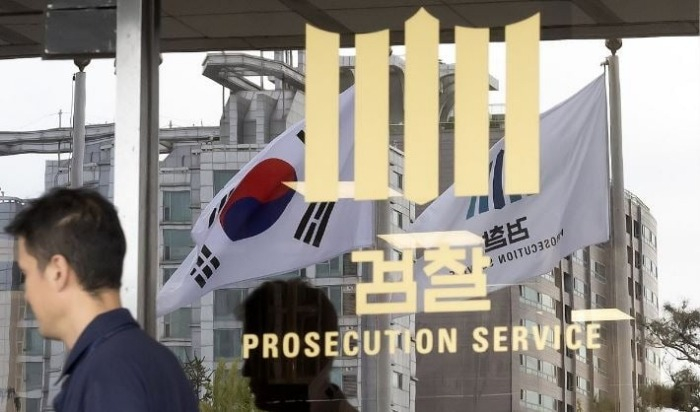
Samsung South Korea’s advanced technology leak:
In the past, technology leaks to China became a big issue due to financial problems among Samsung executives.
In the future, such leaks of advanced technology will be fatal to semiconductor development.
1. Confidential management of foundry technical information is of utmost importance in semiconductor production.
2. The ”Kioxia and WD joint venture” could not be integrated due to South Korea’s opposition.
”The most important thing is for Japan, the United States, and Taiwan to share the chip,” the US points out.
Samsung South Korea has no choice but to continue producing memory chips on its own.